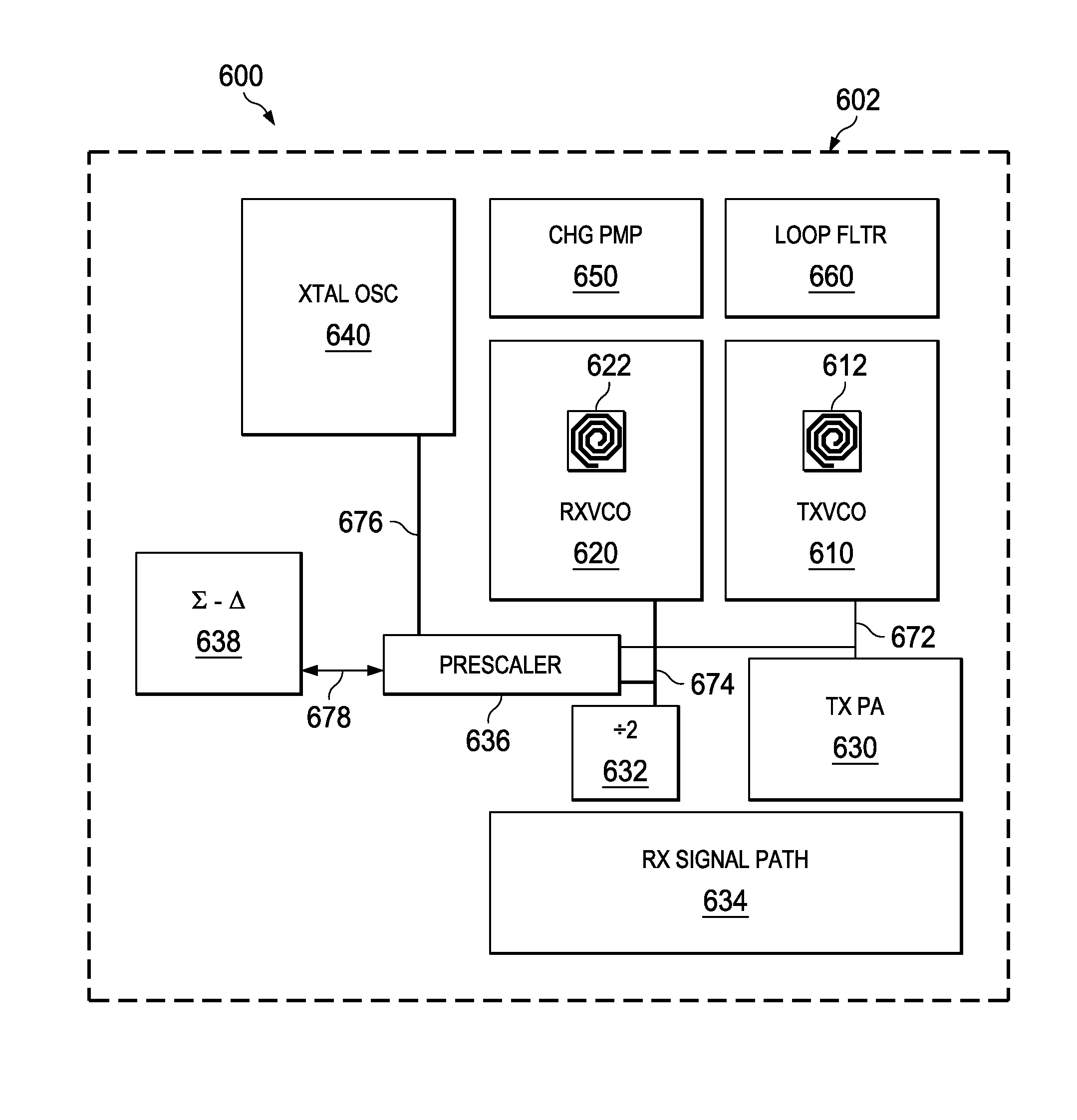Self-calibrating shared-component dual synthesizer
a dual-component, self-calibrating technology, applied in the direction of receiving monitoring, pulse automatic control, electrical equipment, etc., to achieve the effect of optimizing the phase noise differently, reducing the substrate area and power requirements, and cost-effectiv
- Summary
- Abstract
- Description
- Claims
- Application Information
AI Technical Summary
Benefits of technology
Problems solved by technology
Method used
Image
Examples
Embodiment Construction
[0011]The following discussion is directed to various embodiments of the invention. Although one or more of these embodiments may be preferred, the embodiments disclosed should not be interpreted, or otherwise used, as limiting the scope of the disclosure, including the claims. In addition, one skilled in the art will understand that the following description has broad application, and the discussion of any embodiment is meant only to be example of that embodiment, and not intended to intimate that the scope of the disclosure, including the claims, is limited to that embodiment.
[0012]Certain terms are used throughout the following description—and claims—to refer to particular system components. As one skilled in the art will appreciate, various names may be used to refer to a component or system. Accordingly, distinctions are not necessarily made herein between components that differ in name but not function. Further, a system can be a sub-system of yet another system. In the follow...
PUM
 Login to View More
Login to View More Abstract
Description
Claims
Application Information
 Login to View More
Login to View More - R&D
- Intellectual Property
- Life Sciences
- Materials
- Tech Scout
- Unparalleled Data Quality
- Higher Quality Content
- 60% Fewer Hallucinations
Browse by: Latest US Patents, China's latest patents, Technical Efficacy Thesaurus, Application Domain, Technology Topic, Popular Technical Reports.
© 2025 PatSnap. All rights reserved.Legal|Privacy policy|Modern Slavery Act Transparency Statement|Sitemap|About US| Contact US: help@patsnap.com



